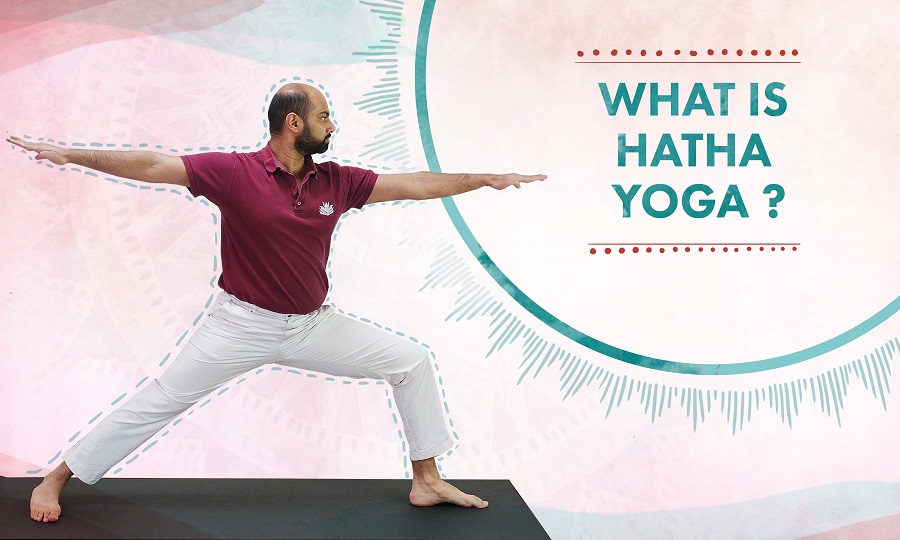I began my yoga journey at the age of eight at a traditional school in India. Apart from Veda lessons, we also had Hatha Yoga classes every morning with our Guruji who came from a respected priest caste. Over the next eight years, I had in-depth lessons with him that challenged me in numerous ways. His classes were strict and followed the classical Hatha Yoga tradition and syllabus, covering all aspects of yoga philosophy, pranayama, yoga practice, and much more.
However, when I moved to Europe in 2007, I was surprised to discover that the modern version of Hatha Yoga in the West was completely different from the traditional practice I had learned as a student in India. Determined to bring the true meaning of Hatha Yoga to others, I opened my own yoga academy in the Netherlands and began teaching Hatha as my Guruji taught me so many years ago.
In this blog, I’ll explain the principles of classical Hatha Yoga, its meaning, underlying philosophies, and how this practice evolved into what it is today. For those looking for practical tips, I'll also share traditional Hatha Yoga poses and techniques and show you how to incorporate them in your daily practice.
What Is Hatha Yoga?
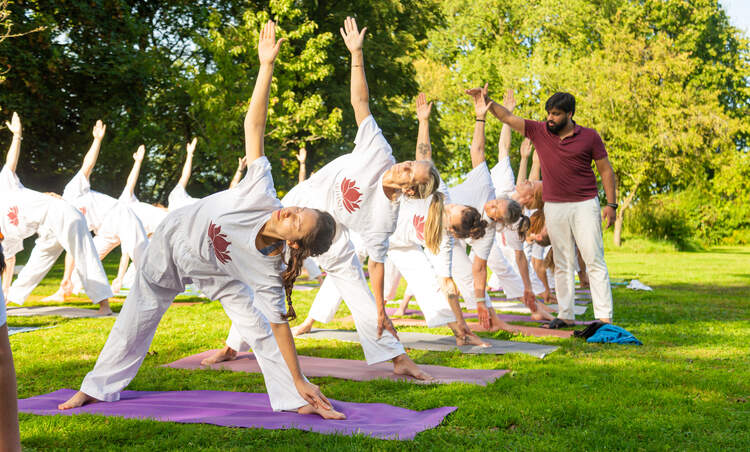
Hatha in Sanskrit literally means ‘stubborn’. Therefore, Hatha Yoga means the stubborn practice of yoga without the interference of the five senses and the mind. Generally, people think of Hatha Yoga only as asana (yoga poses) practice. But it is the austere practice of asana, pranayama, dharana, and dhyana to achieve the sublime state of Samadhi, or enlightenment. In Samadhi, the practitioner is free from the illusion of form, time, and space. Asana is just one of the six practices in this path.
Hatha Yoga originates from Raja Yoga. It is the simpler version (without Yamas and Niyamas) of Raja Yoga. To put it simply, you can say all the yoga poses and pranayama exercises can be classified as Hatha Yoga. So, if you practice any yoga asanas or pranayama exercises, you are practicing Hatha.
It is also interesting to note that some teachers explain Hatha as Ha (sun) + Tha (moon) yoga, because of the fact that Hatha Yoga helps to purify our solar (Pingla) and lunar (Ida) channels.
Six Principles of Hatha Yoga
Hatha Yoga is the six-limb yoga (Shatanga Yoga). The six limbs in Hatha Yoga are:
- Asana – steady comfortable state of body and mind
- Pranayama – expansion of capacity to retain prana
- Pratyahara – withdrawal from the sensory input
- Dharana – bringing the mind to one single point
- Dhyana – observing the self
- Samadhi – becoming free from Maya
So the first two limbs of Raja Yoga (Yamas and Niyamas) are excluded in Hatha Yoga.
Tools in Traditional Hatha Yoga Practice
History of Hatha Yoga
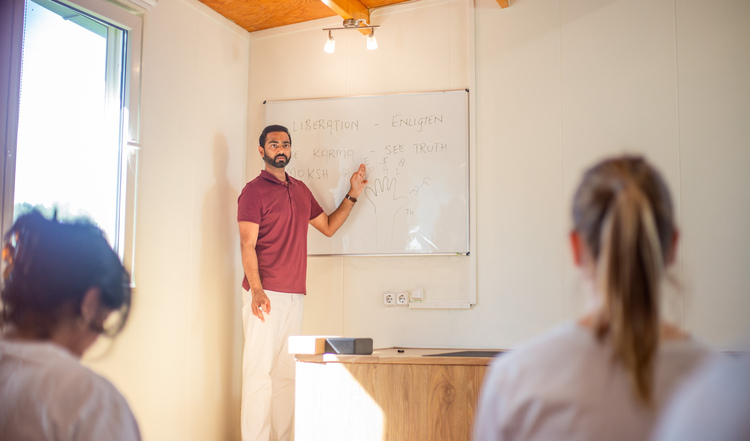
Around the early 15th century, some yoga practitioners from the Natha lineage grew impatient and began practicing asanas before mastering Yama and Niyamas. As the mind was not ready for further practice, they had to work harder. They called it their ‘stubborn’ practice of Yoga. These Natha yogis kept practicing the asanas until they mastered them. Through this new and mentally challenging approach to practicing Raja Yoga, Hatha Yoga was born.
In an effort to outline this new version of Raja Yoga, the renowned 15th-century sage, Swami Swatmarama, compiled the Hatha Yoga Pradipika. Similar to Raja Yoga’s 8 Limbs of Yoga, the book laid out a six limb path to reach Samadhi, removing the first two steps of the Yamas and Niyamas. Therefore, Hatha Yoga is also known as Shatanga Yoga (six limb yoga).
In the Hatha Yoga Pradipika, Swami Swatmarama recommended that practitioners first start with the physical practices of yoga. The reason for this was that it was much easier to master the mind through the body than the Yamas and Niyamas. This made the practice of classical Hatha more accessible to the masses, hence the rapid rise of the practice in the West.
Therefore, Shatanga Yoga focuses primarily on the purification of the body as a path that leads to purification of the mind. This is also crucial to developing a balanced life, which is required for further spiritual development.
Swami Sivananda & Hatha Yoga
In pre-independence India, yoga asana was practiced exclusively by ascetics and monks. In 1936, Swami Sivananda developed a simple yoga sequence with short holds known as the 'Rishikesh sequence’ to make Hatha Yoga more accessible to ordinary people.
Swami Sivananda introduced the idea of five practices of yoga without explaining the deep philosophical aspects. Together, these steps guide us toward a balanced and yogic lifestyle:
1. Exercise
A healthy body goes hand in hand with a balanced mind. The practice of yoga poses with steadiness and ease is an effective technique to develop stamina, strength, and flexibility. While practicing according to the ancient principles, we also simultaneously balance the nervous system and reduce stress.
2. Breathing
In yoga, we learn how to control the mind through conscious breathing techniques. Hatha Yoga includes a broad range of breathing techniques that train the mind and body to focus and find stillness. When mastered, the breath is full and effortless.
3. Relaxation
Relaxation of the body on a regular basis is essential for proper muscle recovering and calming of the senses.
4. Diet
Healthy nutrition nourishes the mind, body, and soul without harming others. As a result, the yogic diet is mostly vegetarian and takes a holistic approach to eating, considering aspects such as your mind, emotions, education, community, and environment.
5. Positive Thinking & Meditation
The way we think affects our state of mind and body. Therefore, the practice of positive thinking, or affirmations, and meditation is very important to achieve a balanced body and mind.
The Evolution of Hatha Yoga
In ancient times, Hatha Yoga was shrouded in mystery and sacredness, accessible only to monks and the male children of the priestly caste could learn and practice it.
By the 15th century, Hatha Yoga gained popularity in India after monks began to demonstrate asanas at public gatherings. Its breakthrough in the West eventually came at the end of the 18th century after British photographers published photos of monks performing dangerous postures in the media.
This sparked a wave of intrigue among Western spiritual seekers, drawn to the mystical allure of Eastern practices. Many journeyed to India to gain a deeper understanding of yoga and mediation. The popularity of Hatha increased when masters began to travel to the West to share their knowledge with others.
Then in the mid-20th century, teachers like Indra Devi and B.K.S Iyengar published yoga books that sold in millions, bringing the practice of Hatha Yoga to the rest of the world.
Benefits of Hatha Yoga
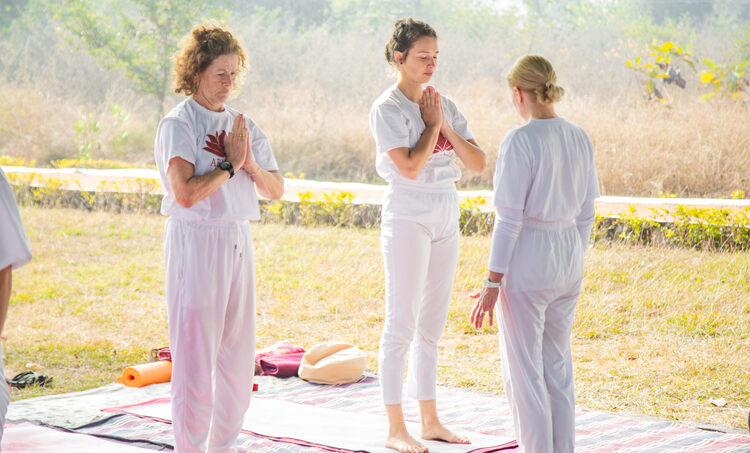
Scientists and researchers have uncovered numerous benefits of Hatha Yoga, some of which you can read about in my book,
Hatha Yoga for Teachers & Practitioners. Below are the main physical and mental benefits you can expect to reap from this practice:
Physical Benefits:
- Improves mobility in the joints
- Improves flexibility in the connective tissue
- Stretches the fascia and improves its condition
- Boosts metabolism
- Improves the functioning of all body systems
- Stimulates cell repair and regeneration
- Improves blood flow in the spinal cord and brain
- Rejuvenates the ligaments
- Helps to stimulate the lymphatic system and cleanses the body
- Improves the overall range of motion of the body
- Increases energy levels
- Improves the function of the lungs and heart (Read: Yoga and Pranayama for Asthma Relief)
- Brings balance to the sympathetic and parasympathetic nervous system
Mental Benefits:
- Calms the senses
- Improve concentration
- Sharpens the focus
- Balances emotions
- Relieves anxiety and depression
- Removes mental fatigue
- Fosters creativity
- Stimulates learning and development
What to Expect in a Hatha Yoga Class?
Generally, a Hatha class lasts 90 minutes. The class is divided into four sections:
1. Breathing
The first part of the class is about breathing exercises. You will do the two most important breathing exercises; Kapalabhati (forceful exhalations & Anulom Vilom (alternate nostril breathing).
2. Warm-up
The second part covers warm-up exercises for the whole body. You will start with Surya Namaskar, followed by leg raises. Surya Namaskar provides a full warm up to the spine, as well as all the large muscle groups.
See: 5 Important Reasons You Should Never Skip Sun Salutations
3. Asanas
The third part of a Hatha Yoga class will cover 12-15 yoga asanas in the traditional sequence. There are 84 traditional Hatha Yoga poses. The most popular poses are:
- Shirshasana – Headstand
- Sarvangasana – Shoulderstand
- Halasana – Plough Pose
- Matsyasana – Fish Pose
- Gomukhasana – Cow-Face Pose
- Paschimottanasana – Seated Forward Bend
- Bhujangasana – Cobra Pose
- Mayurasana – Peacock Pose
- Natarajasana – Lord of the Dance Pose
- Vrikshasana – Tree Pose
You will hold the poses from a duration of 1-3 minutes, depending on your ability and skill level. Between poses there will be short relaxations to slow down the heart rate.
4. Final Relaxation
This is the most calming part of the class. Here, you will get 15 minutes of deep relaxation, typically in Shavasana (Corpse Pose), which may even put you to sleep.
Common Props Used in Hatha Yoga
Sometimes props are used in a Hatha Yoga class. They can help make the pose more accessible and safer if you are struggling to come into the posture. Common props are:
- Meditation cushion
- Bolster
- Yoga block
- Blanket
- Strap
Read: How to Use Yoga Blocks: Poses, Benefits & Pro Tips
How Is Hatha Yoga Different from Other Styles?
Classical Hatha Yoga is an ancient yoga practice that is uniquely different from other modern styles seen in studios today. Below, I break these differences down.
Key Difference | Hatha Yoga | Other Styles |
|---|---|---|
Duration of asanas | Asanas are held steady for 1-5 minutes | Poses are held briefly and are more dynamic |
Focus | Focus is on internal organs and the spine | Focus is on muscle groups and joints |
Impact on the body | Gentle poses, less wear and tear on the body | More dynamic poses, potential for wear and tear |
Breathing | Less oxygen is required | More oxygen may be required due to dynamic movement |
Goal | Stillness of body and mind | General movement and improved physical health is more important |
Who Should Not Practice Hatha Yoga?
There are some people who should not attend a regular Hatha Yoga class (they might find great benefits in an adapted Hatha Yoga class though). In my years of experience, the following individuals might find Hatha Yoga too challenging:
- Senior citizens
- People going through extensive injury recovery
- People with neck or spinal injury
- People with severe knee issues
That said, there are numerous gentler practices like Yin Yoga or Chair Yoga that are more suitable for these groups.
Read: How to Avoid Knee Pain & Injury in Yoga for Sensitive Knees & Yoga for Neck Pain
Guidelines for a Holistic Hatha Yoga Practice
So, how can you apply these principles to your daily life and reap the many benefits of Hatha? One of the most important principles of Hatha Yoga is sthira sukham asanam. Referring to the asana state, it teaches us that an asana is any pose or posture in which you experience both comfort and stability.
Whether on social media or in yoga studios, pushing deeper and perfecting the perfect posture is often seen as the ultimate goal. However, when we delve into the ancient philosophy of Hatha Yoga, we understand that the most important principle of any practice is not perfect form, but finding steadiness and comfort in each breath and pose.
To find that sweet spot of comfort and ease in a yoga pose, it's crucial to tailor your practice to what you're capable of right now. This means gradually increasing the challenge when it comes to building strength, taking it one step at a time. The same goes for enhancing flexibility. Every pose is structured to offer different variations and levels, so you can adjust as you grow stronger and more flexible. This process makes Hatha Yoga a personal journey of growth and change, step by gentle step.
Top Hatha Yoga Books
There are many books available on the topic, but the most popular and comprehensive include:
- Hatha Yoga Pradipika by Pancham Sinhh
- Patanjali Yoga Sutras by Swami Satchindananda
- Hatha Yoga for Teachers & Practitioners by Ram Jain & Kalyani Hauswirth Jain
- Complete Illustrated Book of Yoga by Swami Vishnu Devananda
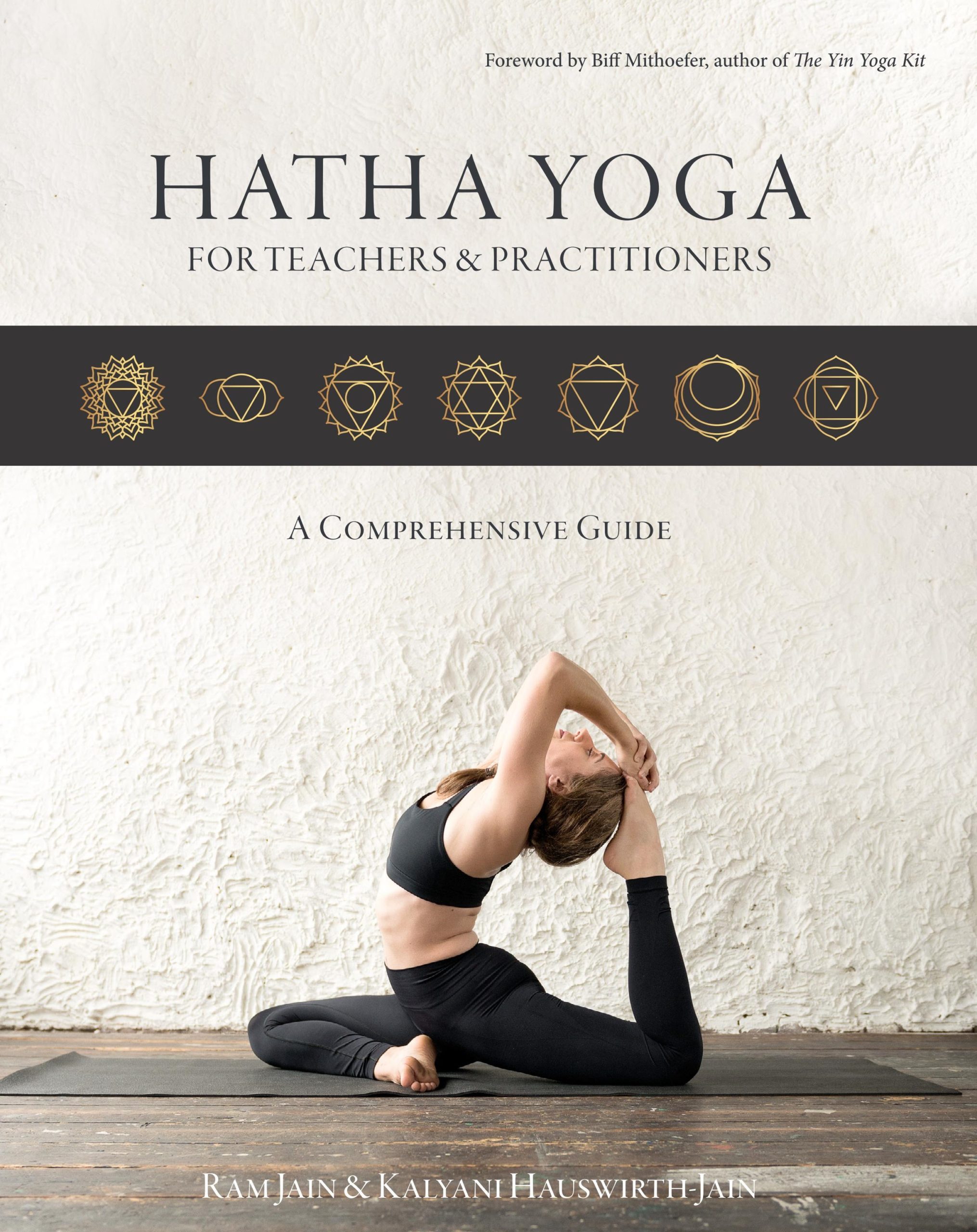
Get a free copy of our Amazon bestselling book directly into your inbox!
Learn how to practice, modify and sequence 250+ yoga postures according to ancient Hatha Yoga principles.
Final Thought
The essence of Hatha goes beyond just yoga poses; it weaves into the very way we live our lives. It's about being firm in our goals, both on the yoga mat and off it, while also embracing and being at ease with our true selves. This insight could very well be yoga's greatest gift to us: the chance to find a comfortable peace with who we are and our role in the world.

